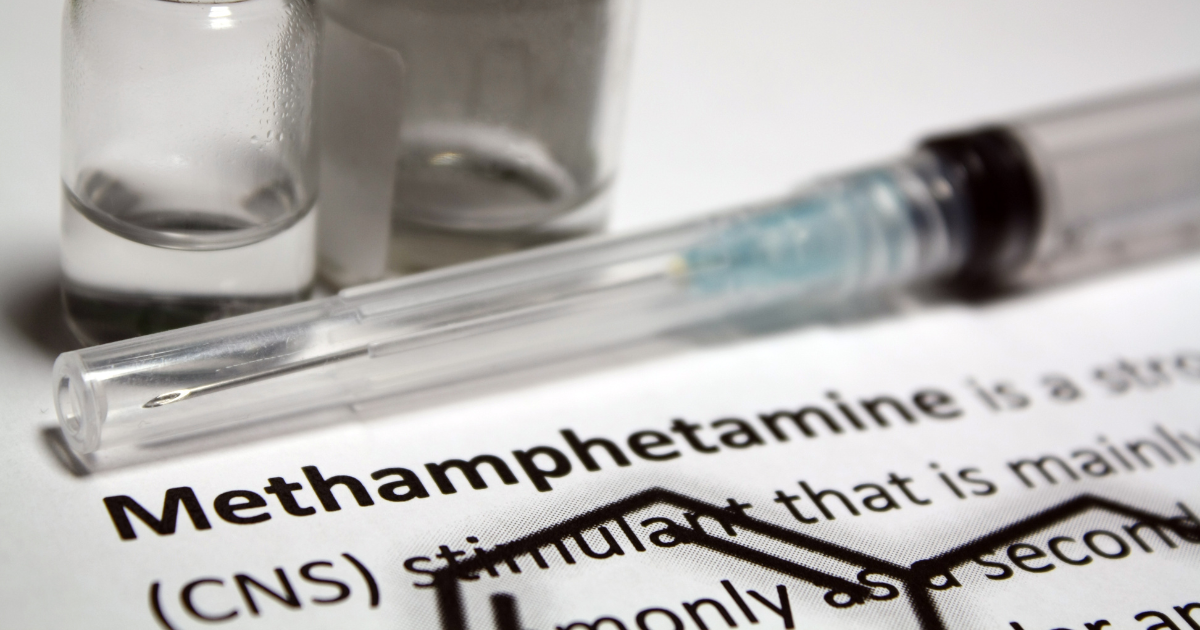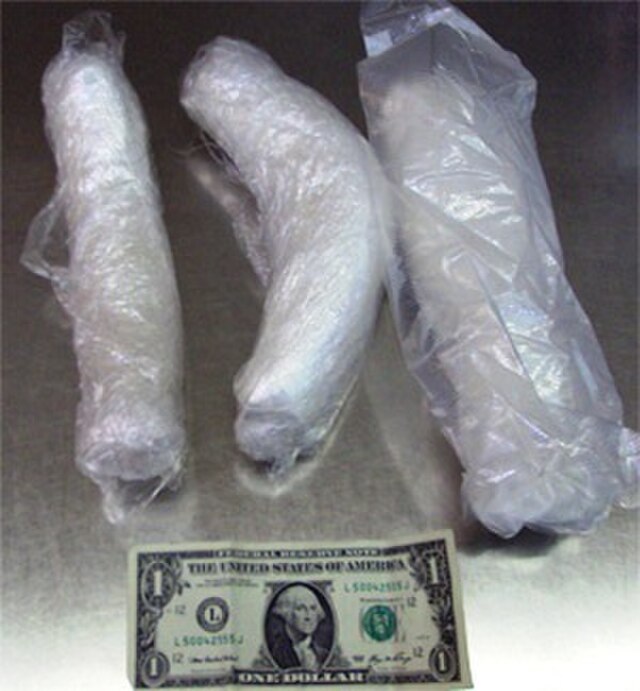Methamphetamine, or meth, is a powerful stimulant created as a manmade alternative to the ephedra plant, a shrub used in traditional Chinese medicine. With over 2.5 million users in the United States, what makes meth attractive to many people, despite the well-known dangers?
The answer lies in the intense but quick high that the drug provides. Users feel a rush of energy and excitement that often makes them want to create the sensation, leading to a pattern of abuse. Before we describe what to expect from the high, here are some facts about the popular Mexican drug trafficking export.
Meth 101: A Brief History Overview
Meth comes from the scientific efforts of Japanese chemists in 1893, serving initially as a treatment for conditions like narcolepsy and asthma.
During World War II, pilots took meth and other amphetamines to stay awake, and in 1919, the world’s first crystal meth was made. The idea for it came from the ephedra plant, which Chinese medicine has used for over 5,000 years. Meth was once used as a psychiatric medicine in the U.S., even to help people lose weight.
In the 1950s, the stimulant hit the market, and was sold as “pep pills” or “bennies.” Many Americans started using meth as a recreational drug, which led to the federal government making it illegal in 1970 under the Controlled Substances Act. Meth is classified as a Schedule II controlled substance, with approved medical use for treating attention deficit hyperactivity disorder (AHD), narcolepsy, and obesity.
Mexican groups manufacture and sell most of the meth in the U.S., including Hawaii. Some Americans make meth too, but not as much. Since 2005, The Combat Methamphetamine Epidemic Act 2005 has made buying the ingredients needed to make meth harder. In 2020, Oregon became the first U.S. state to decriminalize methamphetamine.
What makes people want to use meth, even though it’s risky? The answer is the high it gives. It’s strong and fast but doesn’t last long. Even though using meth is dangerous, people still want it because of how it makes them feel.
What Is a Meth High?
For most meth users, the high is the main motivation for using the drug. When you take meth, the substance floods your brain with high dopamine neurotransmitters that produce pleasurable feelings. Whether you’re a recreational meth user, a regular user, or in the early phase of meth addiction, the drug’s repeated use depends on that soaring high.
How Quickly Does the High Take Effect?
The speed of meth’s effects depends on how it’s taken. Meth is usually:
- Swallowed (eaten)
- Snorted
- Injected
- Smoked
The faster the stimulant enters your bloodstream, the quicker you feel its effects.
Smoking or injecting meth can have strong effects within seconds. If you smoke or swallow the drug, it may take one to three minutes to feel under the influence or high. This quick feeling makes meth use appealing to some, yet it also contributes to the pattern of abuse and can lead to addiction.
How Long Does a Meth High Last?
The delivery methods to get meth into your system quicker allow the drug’s effects to wear off more rapidly. The immediate meth high can last up to sixteen hours, but the cycle of use can continue for days or even weeks, leading to dangerous and unhealthy consequences.
Stages of Meth High
How long the high lasts is a process with seven stages, including the following:
- Rush: This initial stage lasts up to 30 minutes, producing an intense feeling that’s longer-lasting compared to other stimulants like cocaine.
- High: This follows the rush, lasting 4 to 16 hours, where the user may feel smarter and become argumentative, often focusing intensely on trivial tasks.
- Binge: This stage can last 3 to 15 days, where the user tries to maintain the high, becoming hyperactive mentally and physically, but each subsequent rush gets smaller.
- Tweaking: A dangerous phase where there’s no more high or rush. Users may hallucinate and feel as if bugs are crawling under their skin. Hostility and self-harm risks are high.
- Crash: The body shuts down for 1 to 3 days, unable to cope with the drug’s effects.
- Hangover: After the crash, the user feels starved, dehydrated, and exhausted for 2 to 14 days, often leading to taking more of the drug.
- Withdrawal: This painful and difficult stage can last 30 to 90 days, with feelings of depression, loss of energy, and suicidal thoughts.
These stages illustrate the complex and dangerous nature of meth use, with a high that can last hours but effects that linger for weeks or even months, often leading to a painful withdrawal process.
Psychological Effects of the Meth High
- Intense Sensation or Rush
- Long-Lasting High
- Violent Behavior
- Anxiety and Confusion
- Psychotic Features
- Mood Swings
- Homicidal or Suicidal Thoughts
- Damage to Dopamine-Producing Cells
Intense Sensation or Rush
An intense, immediate sensation is felt by those who smoke or inject meth.
Long-Lasting High
Snorting or oral ingestion results in a high lasting up to 12 hours.
Violent Behavior
Chronic meth use can lead to aggression and violent actions.
Anxiety and Confusion
Users may feel anxious, restless, and confused.
Insomnia
Sleep problems are common among meth users.
Psychotic Features
This includes paranoia, visual and auditory hallucinations, and delusions, like feeling insects on the skin.
Mood Swings
Users may experience significant shifts in mood.
Homicidal or Suicidal Thoughts
Paranoia may result in dangerous thoughts toward oneself or others.
Damage to Dopamine-Producing Cells
Long-term use can harm up to 50% of the cells in the brain responsible for producing dopamine.
Physical Effects of the Meth High
Meth is known to cause multiple physical effects, even in small amounts. These effects include the following:
- Increased Wakefulness and Physical Activity: Meth users often experience bouts of energy.
- Decreased Appetite: Stimulants like meth and cocaine can suppress ghrelin, the “hunger hormone,” which tells your brain when it’s time to eat. This could lead to weight loss and sometimes extreme anorexia.
- Rapid Breathing and Heart Rate: Meth use can cause an irregular heartbeat and high blood pressure.
- Hyperthermia (Overheating): Even small doses can raise body temperature, while high doses can become lethal.
- Convulsions: High doses can cause body tremors and convulsions.
- Cardiovascular Collapse and Death: This may result from meth use in high doses.
- Memory Loss: A common side effect of chronic meth use.
- Severe Dental Problems: Meth-related gum and teeth problems, often called “meth mouth.”
- Overdose: High doses may result in death from stroke, heart attack, or overheating; in 2021, there were 32,537 overdose deaths involving stimulants like meth.
How Addictive is Meth?
Methamphetamine is highly addictive due to its impact on the brain’s dopamine levels. When taken, meth triggers dopamine release, leading to intense pleasure. This creates a powerful connection between the drug and the rewarding sensation, encouraging repeated use.
When people stop taking it, withdrawal symptoms can include:
- Anxiety
- Fatigue
- Severe depression
- Psychosis
- Intense cravings
In the U.S., over 1.5 million people aged 12 and older struggled with past-year meth use disorder, highlighting its widespread addictive potential. Fortunately, meth addiction is treatable.
What Comes Next?
Meth produces an intense high that can lead to severe and potentially life-threatening addiction, but there is hope for recovery. If you or a loved one are experiencing withdrawal symptoms, seeking medical detox is crucial. Landmark Recovery’s drug treatment programs for meth use disorder are designed to help break the mental chain tethering you to the drug.
Addiction Treatment at Landmark Recovery
Landmark’s approach includes residential treatment and evidence-based therapy like cognitive behavioral therapy (CBT) to identify the root causes of meth cravings and addiction and teach coping skills to reduce relapse risks. Recovery is possible, and it’s never too late to start the journey.
Call our confidential admissions line at 888-448-0302, day or night, to take the first step towards a healthier, meth-free life.

Choose Recovery Over Addiction
We're here 24/7 to help you get the care you need to live life on your terms, without drugs or alcohol. Talk to our recovery specialists today and learn about our integrated treatment programs.






